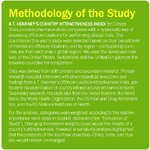Fishing for Opportunities
In general, it will take two or three trials in a new location to develop a solid base offshore.
As other industries race to take advantage of offshore opportunities, pharma has been more reticent. In April 2006, according to www.clinicaltrials.gov, pharma companies were performing 838 ongoing trials in the United States and 158 in the UK. At the same time, however, companies reported just 81 trials in Russia, 49 in India, and 31 in China. That should change soon. The prediction is that pharma companies will double their clinical research activities in developing nations over the next three years.
Nevertheless, when senior pharmaceutical executives discuss offshoring, an unsettling trend emerges: In making offshore decisions, they often rely on anecdotal and incomplete information rather than systematically benchmarking cost, demographics, regulations, and infrastructure. It's time for a new approach.
An index that provides a data-driven analysis of the evolving clinical trials landscape, and indicates where the best opportunities exist, helps companies make offshore decisions. The Country Attractiveness Index for Clinical Trials (created by A.T. Kearney) provides a fact-based ranking of low-cost countries, grading the attractiveness of 15 offshore locations by evaluating five key areas: patient availability, cost efficiency, relevant expertise, regulatory conditions and national infrastructure. (See "Methodology of the Study") The United States', UK's, and Germany's clinical trial use were used as benchmarks to predict the viability of doing trials in emerging countries.

Methodology of the Study
According to the Index, China, India and Russia emerged as the most favorable destinations. (See "States of Attraction", for a snapshot of offshore destinations.)
New Opportunities, Better Outcomes?
The opportunities in lower-cost countries are simply too large to ignore. For example, depending on location, clinical trials in lower-cost countries cost 30 to 65 percent as much as trials in the United States or Western Europe. The revenue implications are equally attractive. According to the index, in low-cost countries, Phase III clinical trials can be completed up to six or seven months sooner than in domestic markets. This translates into getting the drug to the market faster, thus providing earlier relief to patients, a faster return on investment for the company, and longer patent protection.

States of Attraction
However, before moving into a developing country, there are important questions to answer. Which countries are most "open" to pharmaceutical companies? What makes one low-cost country better than another? How do countries compare in infrastructure? Which has the best patient pool? Better regulatory conditions? Intellectual property protection?
Many pharmaceutical companies have settled for ad hoc answers to these questions, often relying on existing relationships they have in a country. The reason for this approach is understandable—there is just not enough good information available on developing countries to allow executives to make sound offshore decisions. Pharma companies need a barometer of success to determine which foreign countries would provide the best opportunities for their clinical trials.
China Takes the Top Spot
China is among the most attractive markets for Phase III clinical trials. With the world's largest urban population, the country provides a vast patient pool and a large infrastructure of hospitals. China also has close to 1.4 million doctors and more than a million nurses and technicians. Their low salaries, in part, mean that conducting a trial in China could cost about half of what it would cost in the United States.
China's appeal is not lost on pharmaceutical companies—with some estimates suggesting that the country could overtake the United States as the world's largest market by 2020. AstraZeneca was among the first to enter China for R&D, opening its East Asia Clinical Trial Center in Shanghai in 2003. But other companies have been slow to follow.
One reason for their delay is that bureaucracy and strict government regulations pose ongoing risks for companies. For example, it can take nine to 12 months to get a trial approved by the Chinese State Food and Drug Administration (SFDA). Companies must obtain a drug import license for every shipment that enters the country, rather than one for each type of drug. China only sporadically enforces intellectual property rights, and cultural and language differences are costly due to the need for translation services.

Evaluation of Study In the index analysis, categories were weighted according to the relative importance each plays in location decisions.
The Chinese government is making changes to attract more foreign-sponsored clinical trials. For example, the government has passed new regulations and is establishing clinical practice centers to train investigators and staff. Although only hospitals designated by SFDA can conduct trials, principal investigators from these institutions often have extensive experience with Western companies, making for a smoother process.
India's Growing Market
Much like China, India offers a vast population and a growing market. The capabilities and expertise of the country's scientists are on par with the highest international standards, and clinical trial data from India frequently are accepted at major conferences and by prestigious journals. With English as the primary language for education and research, companies in India can have seamless working relationships with US companies, and strong overall economic growth is bound to lead to improvements in the healthcare infrastructure.
The Indian government is aware of its burgeoning position in the industry and is offering incentives to promote local pharmaceutical companies and attract foreign firms. For example, companies that conduct in-house R&D receive a tax exemption on all profits. Within the next two years, India plans to create an independent drug regulatory authority similar to FDA. This central group should lead to more rigorous and consistent drug regulations and higher overall standards. Eventually, India hopes to establish a reciprocal agreement with the United States so when one country approves a drug, the other will clear it at the same time.
The incentives have coaxed more than one company to India: GlaxoSmithKline conducted several trials in 2004 and Pfizer doubled its clinical research investment in India to roughly $13 million, with plans to invest another $30 million over the next five years. This may be a tiny fraction of Pfizer's total global R&D of $8 billion, but the interest indicates a growing optimism for this market.
On the downside, intellectual property (IP) protection in India has been weak and the country currently does not permit foreign companies to conduct Phase I clinical trials—though both factors are likely to change in the near future. There are some bureaucratic headaches as well: Pharma companies are required to coordinate their efforts with local physicians and hospitals and to perform toxicology tests between Phases II and III, which can cause a delay of six months.
Russia Dominates Eastern Europe
Pharmaceutical companies report performing 81 trials in Russia, though this number is likely to increase as more companies recognize the benefits of working in Russia. In addition to lower costs, the country offers an appealing patient pool, and under the centralized medical system, patients with similar symptoms receive treatment in the same ward, which facilitates patient recruitment. Many of these patients also are treatment-naïve, meaning they haven't been on prior drug therapies. Such factors allow companies to recruit patients up to 10 times faster than in the United States—slashing the time and money required for a clinical trial.
The inherent problems in Russia are similar to those in India and China. IP protection is weak, and the government creates a variety of hurdles—including a tax on clinical trials. One major concern is the ethics of patient recruitment. Since doctors can make ten times their salary by performing clinical trials, there is an underlying fear that some doctors may neglect to inform patients of important risk factors. Companies performing trials in Russia should establish clear procedures and keep a close watch on patient recruitment to ensure compliance with international ethical standards.
Moving Offshore
Knowing where to move is just the first step in the offshore decision-making process. The next step is determining how to move offshore, which includes managing the inherent risk of doing business in a less developed country. Companies should begin slowly by conducting a small trial or one component of a trial to test whether the fit is right. This will help reduce risk and allow executives time to find out what works and what doesn't. In general, it will take two or three trials in a new location to develop a solid base offshore. To further mitigate risk, many companies collaborate with a multinational clinical research organization (CRO) with hands-on, in-country experience.
Over the longer term, companies should develop a comprehensive strategy that pinpoints and manages ongoing risk. The following should be key aspects of the strategy:
Protect intellectual property. Legislation to protect intellectual property varies widely from country to country, as does enforcement. Until 2005, for example, India granted patents only on process, not product, leaving the door open for local companies to reverse engineer drugs in a way that would infringe on US patent laws. Today, many developing countries—including India—are strengthening their patent laws, partly because they want to attract western companies. Although the shift is encouraging, skepticism no doubt will linger until new legislation is fully tested and enforced. In the meantime, companies must not underestimate the importance of due diligence and tight contracts.
Know the regulatory requirements. Because clinical trials vary from one treatment to another, FDA has not established blanket rules governing them. Instead, it relies on companies to conduct clinical trials that adhere to their own highest standards—and periodically requires companies to open up their international sites for inspection. And FDA has good reasons—in 2004, it found that researchers failed to follow protocols in 30 percent of the inspected sites.
An increasing number of countries, however, are improving their standards for trials. In addition to FDA guidelines, the international Good Clinical Practice (GCP), provides a common platform that all pharmaceutical companies, local professionals, and CROs should follow.
Learn the culture and understand ethnic differences. Differences in how professionals practice medicine may skew trial results or affect trial execution. Local customs also may undermine results. In China, for example, herbal medicines account for up to one-third of the nation's pharmaceutical sales. Researchers may not report the use of traditional herbal medicines, but they could affect the results.
Ethnic differences may also include factors that could affect trial results, such as genetic variations. Companies should design clinical trials to recognize ethnic diversity, and they should ensure that a sufficient percentage of trials take place in other regions—a practice that is also useful in meeting FDA's requirements for ethnic diversity. Knowledge of ethnic diversity will be an asset if long-term plans include selling within clinical-trial countries.
As companies explore offshoring, they should first review their own decision-making processes and metrics. Is there a process for assessing the supply market? Are the evaluation criteria comprehensive and objective? It is important to address all supply-chain implications and other company-specific goals early in the process, and to monitor all aspects of the deal, especially those that might affect location attractiveness. With this level of rigor, companies are more likely to realize all the benefits of offshoring clinical trials to low-cost countries.
A Question of Ethics?
Marjorie Speers is the executive director of the Association for the Accreditation of Human Research Protection Program (AAHRPP), which is dedicated to raising the standard of human protection in research. She also oversaw the 2001 report "Ethical and Policy Issues in Research Involving Human Participants," commissioned by President Clinton's National Bioethics Advisory. Speers recently spoke to PharmExec about the necessity to protect individuals' rights in overseas clinical-trials recruitment, and about the economic implications and the ethics of offshoring.
PharmExec: A recent report indicated nearly 40 percent of clinical trials are conducted in poorer countries, such as Russia and India, where costs are lower and patients more vulnerable—up from about 10 percent in 1999. What kinds of questions of ethics and oversight does this raise?
Speers: There are multiple ethical challenges in conducting research, especially when the costs of material, labor, and intellectual property are dramatically different between developed and underdeveloped countries. In large part, the ethical and oversight criteria are the same, but groups charged with protecting the welfare of human research participants—ethics committees or institutional review boards (IRB)—always become concerned because there is a potential for individuals to be recruited inappropriately. This is particularly critical when recruiters target participants who are vulnerable to coercion or undue influence.

If the research is paid for by US federal funds, or if the data from the foreign studies will be used in support of licensing in the United States, then the IRB must review and approve the research according to the same or similar criteria that apply in the United States. Once the research is reviewed, it has to be conducted in compliance with US standards, which includes obtaining and documenting informed consent. Among the ethical conflicts that can arise is cultural and societal differences that influence how we communicate, obtain, and document informed consent from individuals who have a different perception of autonomy than those from Western countries.
Do you agree that the shift of drug testing to poorer countries is largely being driven by economics?
Economics, for the most part, is driving the exportation of clinical trials out of the United States. Costs of conducting trials are much less in other countries; labor and supply costs are less. The added attraction of many developing countries is the large populations from which subjects can be recruited. Many of the prospective participants have never been exposed to treatments, making them attractive candidates to be studied.
At least one other motivator for conducting research outside of the United States is the lack of federal or national regulations to protect human subjects. While many countries have adopted good clinical practice guidelines, others do not have any code of ethics that carries the force of law. And even though the same ethical standards apply throughout the world, the practice of the standards is only as good as the enforcement of the international guidelines or US regulations.
By doing offshore clinical trials, do researchers exploit the vulnerability of foreign patients who are eager to sign up because they lack viable alternatives?
This is a difficult question because one can argue on both sides. Some say that conducting clinical trials with vulnerable patients is exploitive because they cannot make a truly voluntary decision to participate in the trial. Others argue that it isn't exploitive because these individuals know what they are doing and get better healthcare access. It becomes clear that the sponsors, IRBs, and the investigators have an obligation to make certain that the trial is well-designed, and that there is a balanced system of maximizing benefits and minimizing risks.
What are the implications when a clinical trial is done in a foreign country, especially in a Third World country, but the manufacturer then tries to get approval in the United States where the conditions are clearly different?
The standards for conducting clinical trials are becoming more and more global. Sponsors have worldwide operations and when they conduct trials, they often plan on submitting the results to more than one country for approval. The sponsor makes a decision about where the results will be submitted before conducting the trial. If the results will be submitted to FDA, then the trial must be conducted in accordance with US regulations and practices—even in a foreign country. In developing countries, researchers face many challenges, but the ethical standards embodied in the US federal regulations must be followed. For example, illiteracy rates are higher in developing countries, so the researchers are required to choose language that explains the trial carefully.
Wynn Bailey (wynn.bailey@atkearney.com) is vice president of the Chicago office, Carol Cruickshank (carol.cruickshank@atkearney.com) is vice president of the Toronto office, and Nikhil Sharma (nikhil.sharma@atkearney.com) is a consultant at A.T. Kearney.
FDA Grants Priority Review to Regeneron’s Eylea for Macular Edema Following Retinal Vein Occlusion
April 18th 2025Regulatory action was based on data from the Phase III QUASAR trial, which demonstrated that Eylea HD dosed every eight weeks achieved non-inferior visual acuity outcomes compared to Eylea in patients with macular edema following retinal vein occlusion.
Addressing Disparities in Psoriasis Trials: Takeda's Strategies for Inclusivity in Clinical Research
April 14th 2025LaShell Robinson, Head of Global Feasibility and Trial Equity at Takeda, speaks about the company's strategies to engage patients in underrepresented populations in its phase III psoriasis trials.
New Insights Into T Cell Exhaustion and Inflammation in Long COVID
April 17th 2025Nigel McCracken, chief operating officer, Virax Biolabs, discusses new findings that reveal altered cytokine activity and evidence of T cell exhaustion in long COVID patients, providing deeper insight into post-infection immune disruption.
Key Findings of the NIAGARA and HIMALAYA Trials
November 8th 2024In this episode of the Pharmaceutical Executive podcast, Shubh Goel, head of immuno-oncology, gastrointestinal tumors, US oncology business unit, AstraZeneca, discusses the findings of the NIAGARA trial in bladder cancer and the significance of the five-year overall survival data from the HIMALAYA trial, particularly the long-term efficacy of the STRIDE regimen for unresectable liver cancer.
Amgen’s Imdelltra Demonstrates Significant Overall Survival Improvement in Small Cell Lung Cancer
April 16th 2025In the Phase III DeLLphi-304 trial, patients with small cell lung cancer administered Imdelltra achieved a statistically significant and clinically meaningful improvement in overall survival compared to standard-of-care chemotherapy.